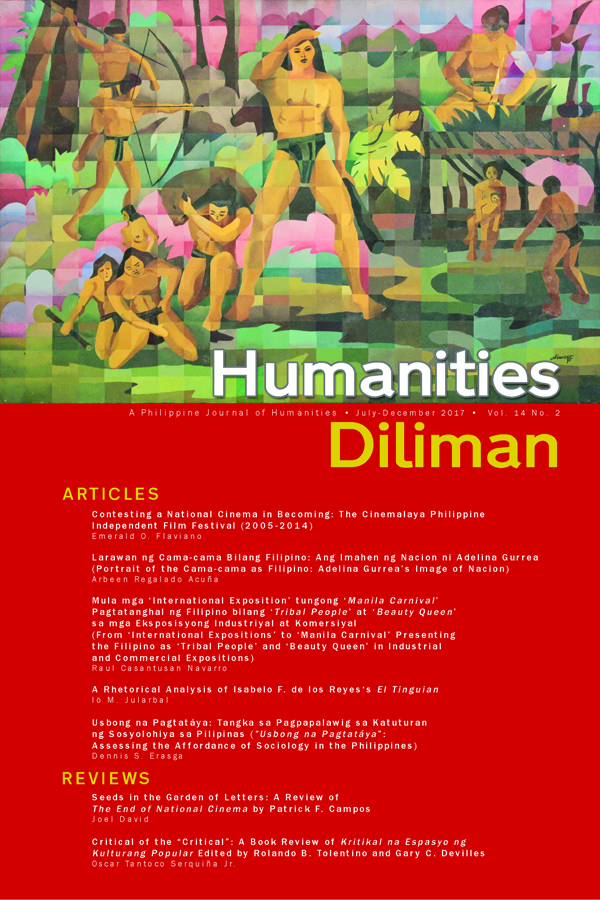From 'International Expositions' to 'Manila Carnival' Presenting the Filipino as 'Tribal People' and 'Beauty Queen' in Industrial and Commercial Expositions
Abstract
Written as a contribution to the Bagong Kasaysayan (BAKAS) movement that currently traces the Philippine political and cultural transformations that happened between the years 1890 and 1913 (recognized as a crucial period in the development of national consciousness of the Filipino), this paper rereads colonial discourses that were attempts at speaking for the natives, images that were constituted to showcase the Filipino, and colonizer and colonized accounts that were testament to the said experience.
Today, colonial narratives make up the historical archives that scholars refer back to make sense of the past and of the Filipino’s experience. All through the 1870s to the 1930s, trade fairs were intended to create an impression, a world, and an exotic image that was and is servile to colonial ends. Though intended to highlight technological advances of the time, the Filipino was introduced in a re-staged, re-created approximation of his person (i.e., “halfdemon,” heathen, etc.) in quasi situ. Lifted out of context, he was read as an “Other”— and therefore inferior.
In line with the Pantayong Pananaw resolve, the paper is written in Filipino as a way of enriching, re-writing, and reclaiming the Filipino’s sense of history and identity.
Keywords: Exposition, Manila Carnival, tribu, colonization, diskurso (discourse)


